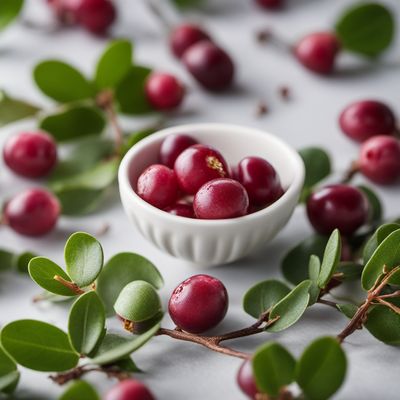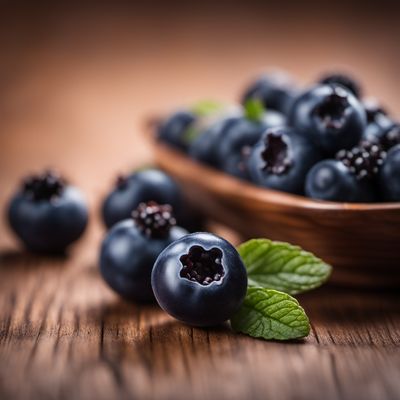
Ingredient
European barberries
Tangy Gems: Exploring the Delights of European Barberries
European barberries are small, bright red berries that grow on thorny shrubs. They have a tart and tangy flavor, similar to cranberries or sour cherries. The berries are small and round, about the size of a currant, and have a slightly wrinkled skin. They are known for their vibrant red color, which adds a pop of brightness to any dish. The texture of European barberries is soft and juicy, with a slight crunch from the seeds inside.
Origins and history
European barberries, also known as Berberis vulgaris, are native to Europe, North Africa, and Western Asia. They have a long history of culinary and medicinal use, dating back to ancient times. In Europe, barberries were traditionally used in jams, jellies, and desserts. They were also used in traditional medicine for their various health benefits, including their high vitamin C content.
Nutritional information
European barberries are a good source of vitamin C and antioxidants. They are also low in calories and fat, making them a healthy addition to meals and snacks.
Allergens
European barberries are generally considered safe for consumption and are not known to be allergenic. However, individuals with known allergies to berries or other fruits should exercise caution.
How to select
When selecting European barberries, look for berries that are bright red in color and plump. Avoid berries that are shriveled or have a dull appearance. Fresh barberries should have a slightly firm texture and should not be overly soft or mushy.
Storage recommendations
To maintain the freshness of European barberries, store them in the refrigerator in a sealed container or airtight bag. They can be kept for up to a week. Alternatively, the berries can be frozen for longer storage.
How to produce
European barberries can be grown in home gardens or small-scale farms. They require well-drained soil and prefer full sun or partial shade. The shrubs can be propagated through seeds or cuttings, and they typically start producing berries within 2-3 years.
Preparation tips
Before using European barberries, rinse them thoroughly under cold water to remove any dirt or debris. They can be used in both sweet and savory dishes, such as jams, sauces, salads, and baked goods. The tartness of the berries pairs well with rich meats, cheeses, and creamy desserts. To balance the tartness, you can add a sweetener like honey or sugar when using them in desserts.
Substitutions
If European barberries are not available, you can substitute them with dried cranberries or sour cherries, although the flavor profile may differ slightly.
Culinary uses
European barberries are commonly used in European cuisine to add a tangy flavor to dishes. They are often used in jams, jellies, sauces, and desserts like pies and tarts. In savory dishes, they can be used in marinades, dressings, and stuffing for poultry or game meats.
Availability
European barberries are commonly available in Europe, particularly in countries like Iran, Turkey, and Russia, where they are used in traditional dishes.
More ingredients from this category » Browse all

Haskaps
The Marvelous Haskaps

Myrtle berries
The Enchanting Berries of Myrtle

Bilberries (generic)
The Secret Superfood: Unveiling the Power of Bilberries

Golden currant
The Fragrant Spice of Delight

Ugniberries
The Enigmatic Delight: Unveiling the Secrets of Ugniberries

Aronia berries
The Mighty Antioxidant Powerhouse

Bearberries
The Wild Berry Wonder

Serviceberries
The Berry of Abundance

Salal
The Wild Berry: Salal

Huckleberries
The Wild Delicacy: Unveiling the Enchanting World of Huckleberries

Worcesterberries
The Tangy Delight: Worcesterberries

Blueberries
Bursting with Antioxidant Power: The Vibrant World of Blueberries